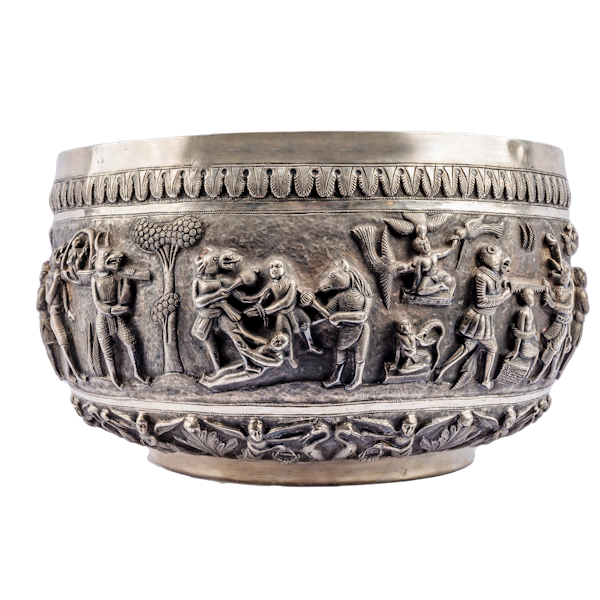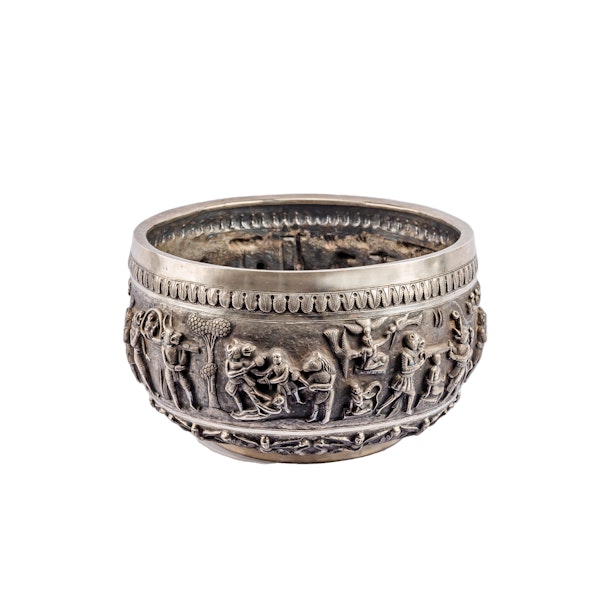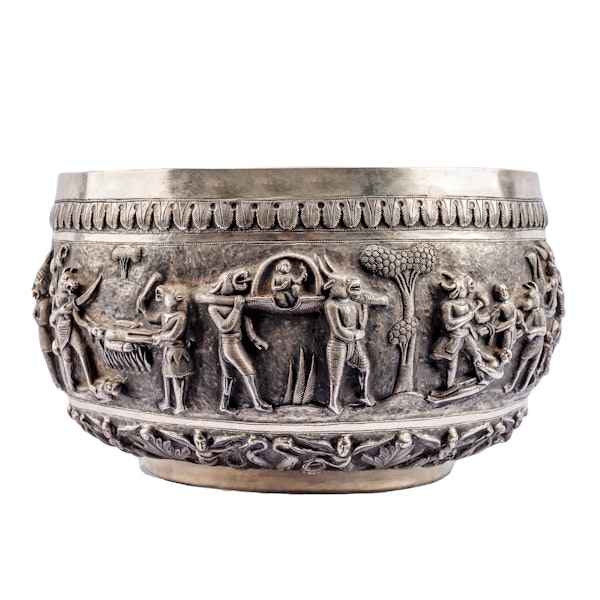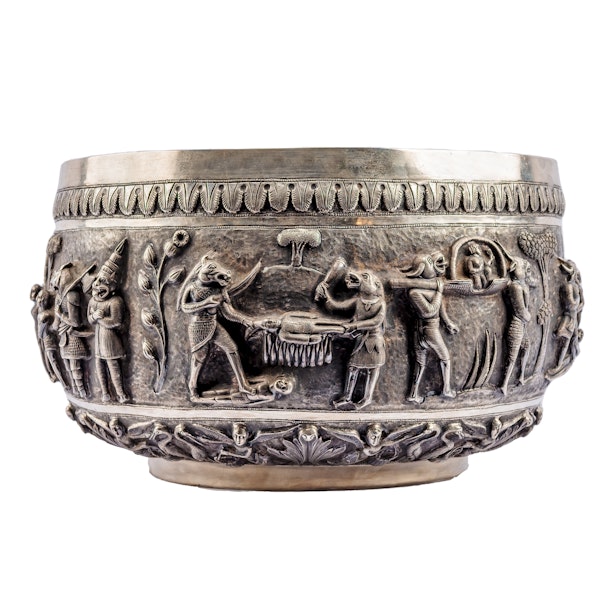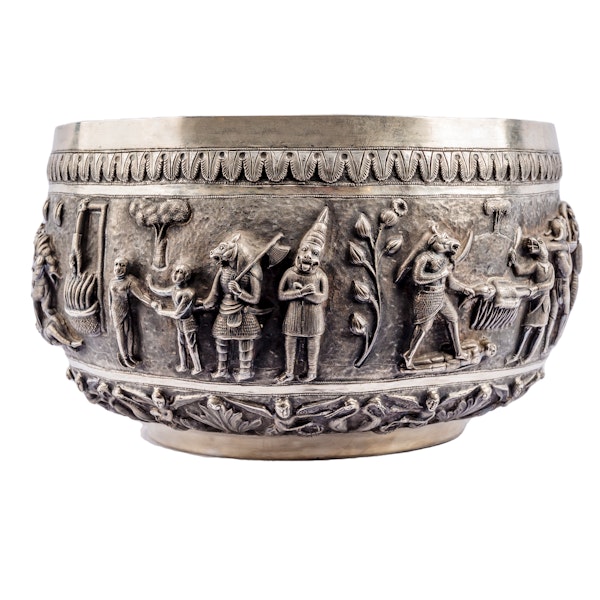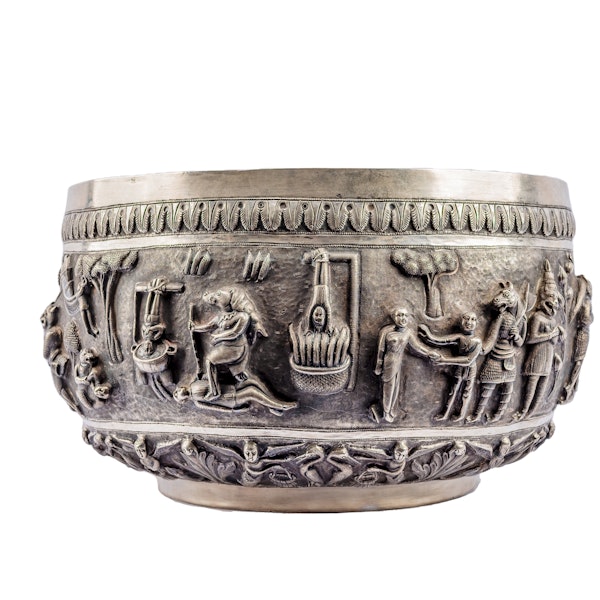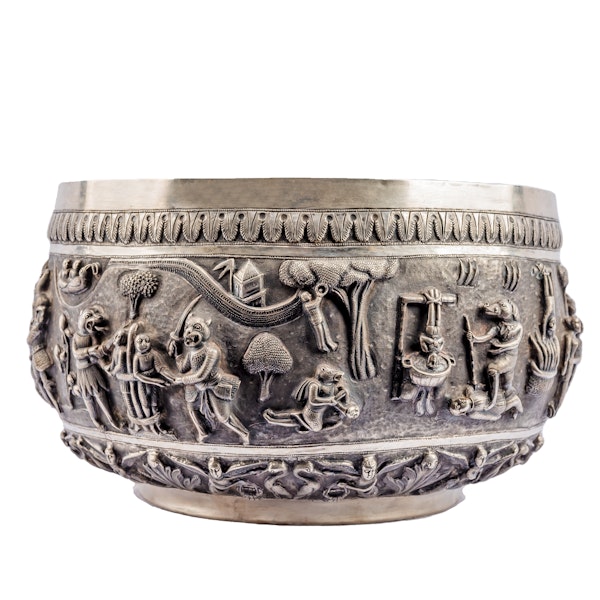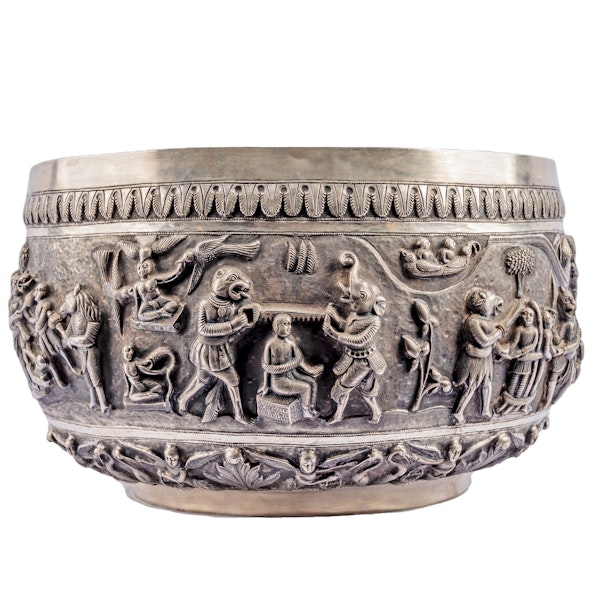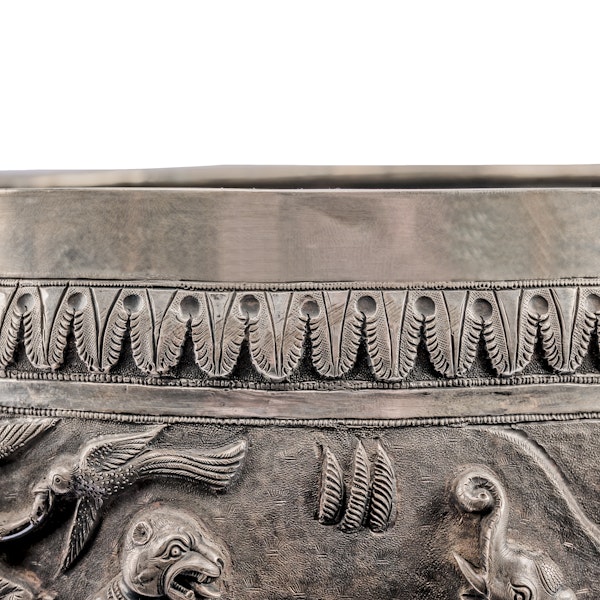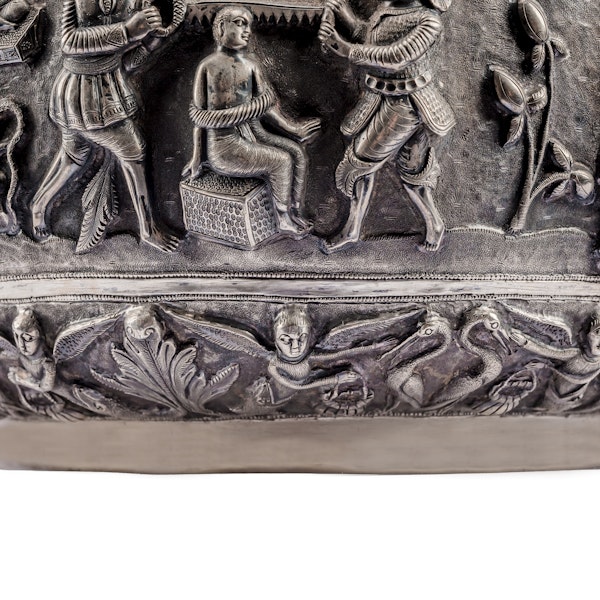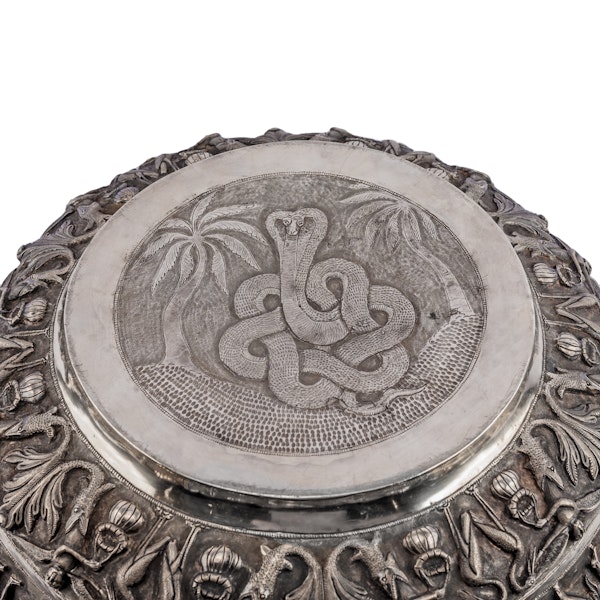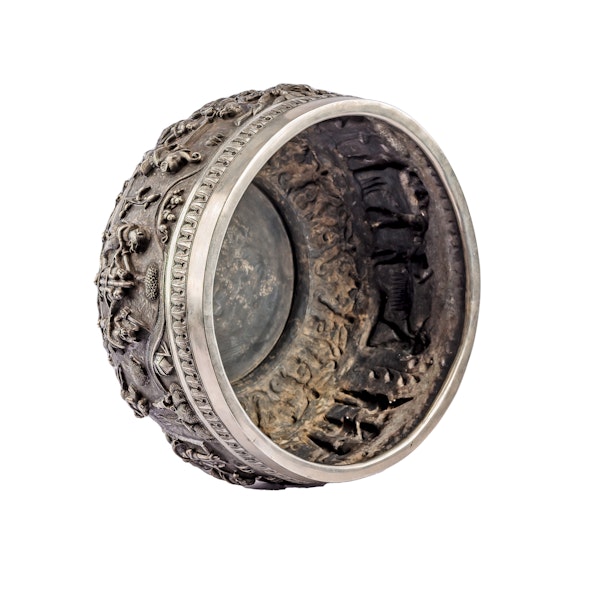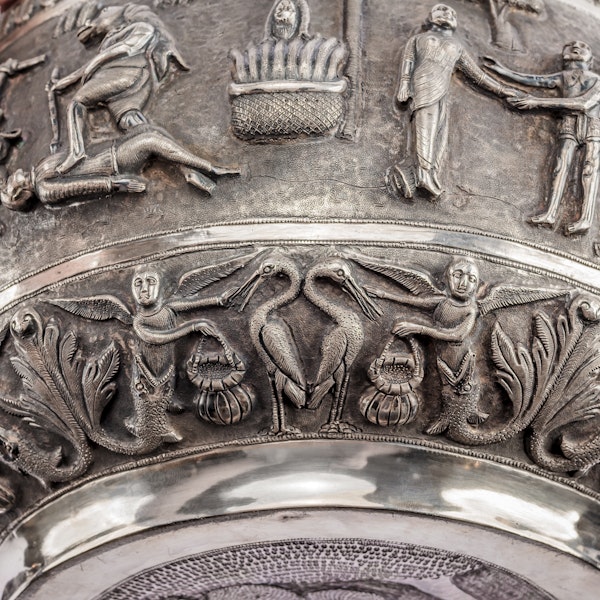A large 19th-century Indian silver bowl ornamented using repousse, chasing and engraving depicting scenes of Naraka (Hell)
A large 19th-century Indian silver bowl ornamented using repousse, chasing and engraving depicting scenes of Naraka (Hell)
£18,000.00
Description
A large 19th-century Indian silver bowl ornamented using repousse, chasing and engraving depicting scenes of Naraka (Hell). This fascinating object is ornamented with a series of dramatic and gruesome scenes which illustrates various torments that are to be found in the Hindu Hell, Naraka, which is also to be found in Jainism and Buddhism. Also known as Yamaloka, Naraka is the abode of Yama, the god of Death, and is described as located in the south of the Universe and beneath the Earth. Below a plain rim and a band of stylised foliage, the main body of the bowl consists of a continuous frieze of gruesome scenes punctuated with stylised trees and foliage to give the impression of a dense jungle. The tormented souls are subjected to the various torments associated with their sin by animal-headed demons called Yama-dhutas or Yama-purushas who are also the messengers of Yama and tasked with the collection of the soul at death as well as performing the necessary punishments. The base of the bowl is decorated with another frieze of a repeating group separated by an acanthas leaf of angelic figures emerging from fish-holding feeding bowls and tending Sarus Cranes. These animals represent the symbols of long life, prosperity, good luck, and good health. The inclusion of these birds contrasts with the torments represented above and perhaps refers to the benefits of leading a good life and that after the punishment of the soul there remains a chance to be reincarnated as higher beings. The bowl's bottom is decorated with an intricate representation of a writhing cobra between two palm trees. The cobra, and indeed snakes in general, symbolise eternity, fertility, and regeneration in Hinduism as well as being the bearer of ancestors' souls, a role that ties in with the bowls decoration and the possibilities the soul of the deceased may face. There are various texts describing the number and names of the hells in the Hindu tradition, each one being intended for a specific sin and resulting torment. Many describe 28 hells. After death the messengers of Yama bring all beings to the court of Yama where he weighs the virtues and vices of the being and passes judgement. In general, the time a being is kept in hell is temporary, after the punishment the souls are reborn as lower or higher beings. The majority of all living beings, including humans and beasts, go to Yama's abode upon death where they are judged. However, very virtuous beings are taken directly to Svarga (heaven). People devoted to charity, especially donors of food, and eternal truth speakers are spared the justice of Yama's court. War-heroes who sacrifice their life and people dying in holy places like Kurukshetra are also described as avoiding Yama. Those who get moksha (salvation) also escape from the clutches of Yamadutas. Those who are generous, and ascetics are given preferential treatment when entering Naraka for judgement. The way is lighted for those who donated lamps, while those who underwent religious fasting are carried by peacocks and geese. Early texts like the Rigveda do not have a detailed description of Naraka. It is simply a place of evil and a dark bottomless pit. The Atharvaveda describes a realm of darkness, where murderers are confined after death. The Shatapatha Brahmana is the first text to mention the pain and suffering of Naraka in detail, while the Manu Smriti begins naming the multiple hells. The epics also describe Hell in general terms as a dense jungle without shade, where there is no water and no rest. The names of many of the hells is common in Hindu texts; however, the nature of the sinners tormented in particular hells varies from text to text. The 28 hells outlined in the Bhagavata Purana, and the Devi Bhagavata Purana are as follows: Tamisra Andhatamisra Raurava Maharaurava Kumbhipaka Kalasutra Asipatravana/Asipatrakanana Shukaramukha Andhakupa Krimibhojana/Krimibhaksha Sandansa/Sandamsa Taptasurmi/Taptamurti Vajrakantaka-salmali Vaitarni/Vaitarna Puyoda Pranarodha Visashana Lalabhaksa Sarameyadana Avici/Avicimat Ayahpana Early 20th century popular print illustrating Naraka Ksarakardama Raksogana-bhojana Shulaprota Dandasuka Avata-nirodhana Paryavartana Sucimukha While Naraka is described in various texts and Hindu epics the depiction of the various ordeals to be found there is uncommon in art. Specific deities and demons do appear in sculpture and are to be found in wall paintings and in the decoration of some texts. It was, however, in the nineteenth century and the development of mass production prints that Naraka became a popular subject for artists such as Raji Ravi Varma (1848 - 1906) whose paintings were quickly reproduced and sold to a mass market. On decorative objects and silver, however, it remained a rare subject making this bowl an exceptional example and most likely a special commission as there appears to be nothing comparable.
| item details | |
|---|---|
| Origin | Asian |
| Period | 19th Century |
| Style | Other |
| Condition | Excellent |
| Diameter | Weight: 2780 grams |
Product REF: 10081
